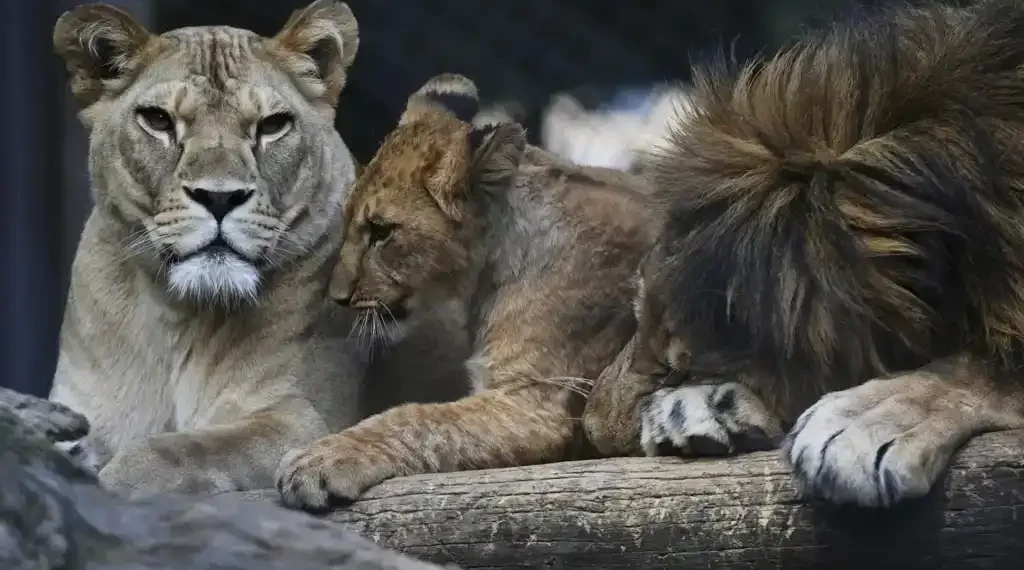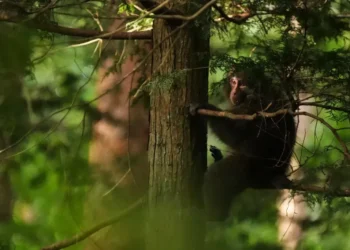Rare Barbary Lion Cubs Born in Czech Zoo as Conservation Efforts Continue
Published Time: 08-16-2025, 14:30
Four Barbary lion cubs, three females and one male, were recently born at Dvůr Králové Safari Park in the Czech Republic, marking a significant step in conserving a species extinct in the wild. The cubs are part of an international program aimed at preserving the fragile Barbary lion population and may eventually be relocated to other participating zoos worldwide.
Cubs Enjoy Outdoor Enclosure Under Parental Care
Visitors at Dvůr Králové Safari Park have been able to watch the young cubs interact and play under the supervision of their parents, Khalila and Bart. The sight of the cubs roaming their outdoor enclosure highlights the zoo’s ongoing efforts to provide a naturalistic environment for endangered species.
The zoo is part of a coordinated international endangered species program, which oversees the care, breeding, and eventual relocation of Barbary lions to other participating parks. Some of the cubs are expected to be sent to the Beersheba Zoo in Israel, where they will continue their growth under specialized care.
Conservation Efforts and the Possibility of Reintroduction
Dvůr Králové Deputy Director Jaroslav Hyjánek emphasized that reintroducing Barbary lions into the wild remains a long-term goal. While preliminary discussions with Moroccan authorities have occurred, any plan for reintroduction is considered a distant prospect.
“The vision of seeing these lions back in their natural habitat is ambitious, but it’s important to aim for sustainability,” Hyjánek said. “Without such a vision, the role of zoos in conservation would lose much of its meaning.”
Historically, Barbary lions once roamed freely across northern Africa, including the Atlas Mountains. Human activities, including hunting and habitat destruction, led to their extinction in the wild by the mid-20th century. The last confirmed wild Barbary lion was killed in 1942, and today, fewer than 200 individuals survive in captivity worldwide.
Historical Significance of the Barbary Lion
The Barbary lion, part of the Northern lion subspecies, is known for its majestic appearance and symbolic strength. Its decline is attributed to centuries of human activity. Gladiators in Roman times often hunted the species for entertainment, while extensive hunting and habitat encroachment in the 19th and 20th centuries accelerated their disappearance from the wild.
The last documented photograph of a wild Barbary lion dates back to 1925, underscoring the urgency of conservation measures in captivity. Today’s efforts aim to maintain genetic diversity and ensure the survival of the species through carefully monitored breeding programs.
International Collaboration for Species Survival
The Czech zoo is actively engaging with international partners to determine the best course for Barbary lion conservation. Plans for a conference in Morocco later this year or in early 2026 will bring together experts to evaluate the feasibility of reintroducing the species to its historic range in the Atlas Mountains.
Challenges to reintroduction include ensuring adequate prey populations, securing protected habitats, and obtaining cooperation from local communities. Any reintroduction plan must also comply with strict conservation protocols to prevent conflicts between lions and human populations.
Importance of Zoos in Conservation
Hyjánek highlighted the critical role of zoos in species preservation. By maintaining healthy captive populations, zoos not only safeguard animals from extinction but also provide opportunities for research and education.
“It’s not just about keeping animals in captivity; it’s about preparing for a sustainable future where they can potentially return to the wild,” he said. “Each successful birth, like these cubs, represents hope for the species and a testament to coordinated conservation efforts.”
Future Outlook
With the birth of these four cubs, the Czech zoo continues to contribute to global efforts to save the Barbary lion. While reintroduction remains a complex challenge, ongoing international collaboration and expert planning offer the potential for a brighter future for one of the world’s rarest big cats.
The cubs’ growth and eventual relocation will be closely monitored to maintain genetic diversity and support the species’ long-term survival. Conservationists remain cautiously optimistic that these efforts may someday lead to the Barbary lion’s return to its native habitat.
This article was rewritten by JournosNews.com based on verified reporting from trusted sources. The content has been independently reviewed, fact-checked, and edited for accuracy, neutrality, tone, and global readability in accordance with Google News and AdSense standards.
All opinions, quotes, or statements from contributors, experts, or sourced organizations do not necessarily reflect the views of JournosNews.com. JournosNews.com maintains full editorial independence from any external funders, sponsors, or organizations.
Stay informed with JournosNews.com — your trusted source for verified global reporting and in-depth analysis. Follow us on Google News, BlueSky, and X for real-time updates.













